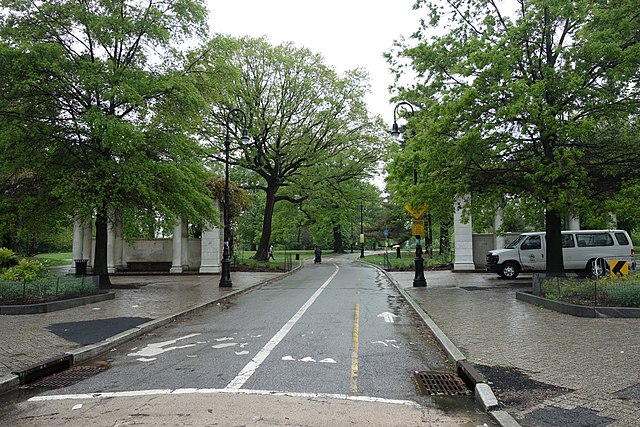

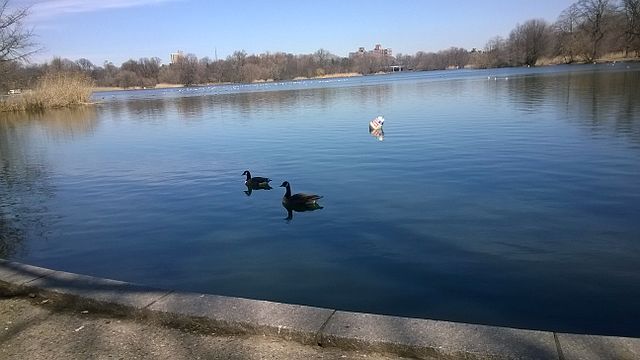
Brooklyn’s Prospect Park is a public green space. The Brooklyn Museum, Grand Army Plaza, and the Brooklyn Botanic Garden are close by, and the park is located between the communities of Park Slope, Prospect Heights, Prospect Lefferts Gardens, Flatbush, and Windsor Terrace. Prospect Park, which has a total area of 526 acres (213 ha)[5], is Brooklyn’s second-largest public park after Marine Park. Prospect Park was first outlined in legislation approved in 1859 and later designed by Frederick Law Olmsted and Calvert Vaux, who also contributed to the creation of Manhattan’s Central Park. Despite not being fully finished until 1873, Prospect Park was initially opened in 1867. Following that, the park’s amenities received a number of alterations and additions. The park underwent a number of additions throughout the 1890s as part of the City Beautiful architectural movement. Robert Moses, the commissioner of the New York City Department of Parks and Recreation (NYC Parks), launched a drive to clean up Prospect Park at the beginning of the 20th century. The Prospect Park Alliance was founded in response to a period of decline in the late 20th century, and it began to renovate various areas of the park in the late 1980s. The Prospect Park Bandshell, which holds free summertime outdoor concerts, the Prospect Park Zoo, the Picnic House, Litchfield Villa, the 90-acre (36 ha) Long Meadow, the Boathouse, Concert Grove, and Brooklyn’s lone lake are some of the park’s main attractions. The Prospect Park Tennis Center, as well as basketball courts, baseball diamonds, soccer fields, and the New York Pétanque Club on the Parade Ground, are among the park’s other sporting amenities. In close proximity to the baseball grounds, on Quaker Hill, there is a private Society of Friends (Quaker) cemetery.
The Brooklyn-Queens Greenway, a system of parks that stretches throughout western Long Island, also includes Prospect Park. On November 25, 1975, Prospect Park was named a New York City aesthetic landmark, and on September 17, 1980, it was added to the National Register of Historic Places. Each year, more than eight million people visit, so there is something for everyone. Biking, hiking, pedal boating, and bird watching are all popular activities in Prospect Park. The gentle hillsides are ideal for sledding in the winter. With multiple playground facilities, a historic carousel, and other educational features, the Prospect Park Children’s Corner is a special place for entertainment, exploration, and learning. The Prospect Park Bandshell is the major location for the Celebrate Brooklyn Performing Arts Festival, which holds live outdoor performances and concerts every summer. Prospect Park is home to many other cultural activities.
In Brooklyn, there is an art gallery called the Brooklyn Museum. The museum is the second largest in New York City and is 560,000 square feet (52,000 m2) in size. It houses a 1.5 million object art collection. The Beaux-Arts structure housing the museum was created by McKim, Mead, and White and is close to the Brooklyn neighbourhoods of Prospect Heights, Crown Heights, Flatbush, and Park Slope. The Brooklyn Museum was intended to be the biggest art museum in the world when it was established in 1898 as a section of the Brooklyn Institute of Arts and Sciences. The museum initially struggled to preserve its structure and collection, but in the late 20th century, extensive renovations helped it to become rejuvenated. Antiquities, in particular its almost 3,000-year-old collection of Egyptian antiquities, are significant components of the collection. Important antiquities collections include include works of art from Europe, Africa, the Pacific, and Japan. Starting with the Colonial era, there is a substantial representation of American art. The collection features works by Mark Rothko, Edward Hopper, Norman Rockwell, Winslow Homer, Edgar Degas, Georgia O’Keeffe, and Max Weber, among other artists. The museum has the Steinberg Family Sculpture Garden, which makes use of salvaged parts of New York City’s buildings. Visit the Brooklyn Museum if you’re looking for diversity. In addition to its sizable, culturally organised permanent collection, it also hosts travelling exhibitions from a wide range of regions and eras. Visitors can purchase cheap passes that allow them to see both on the same day because they are next to each other in the Brooklyn Botanic Garden.
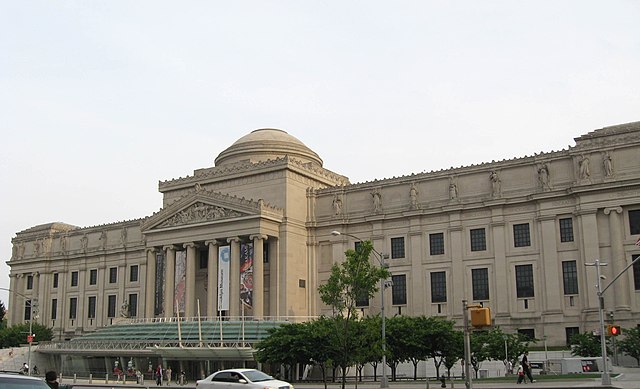

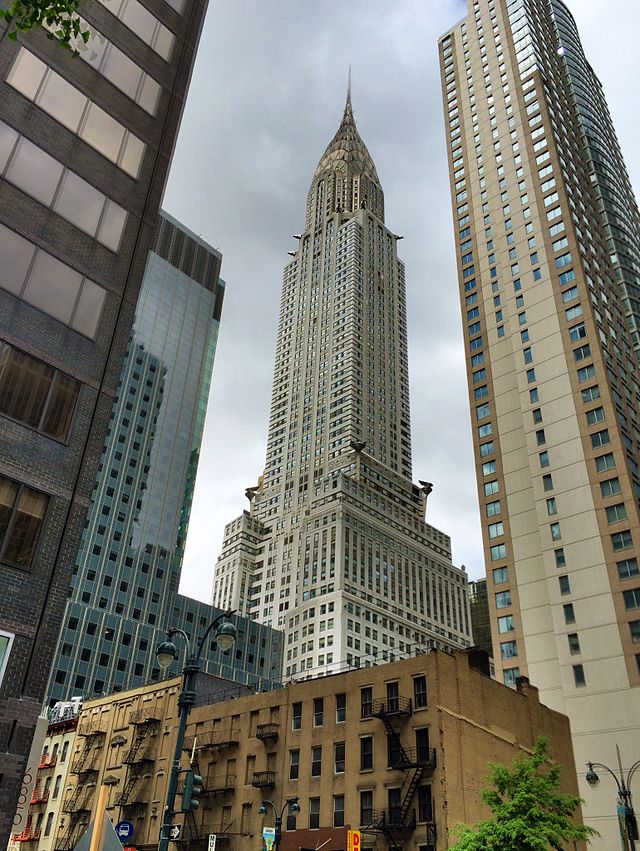
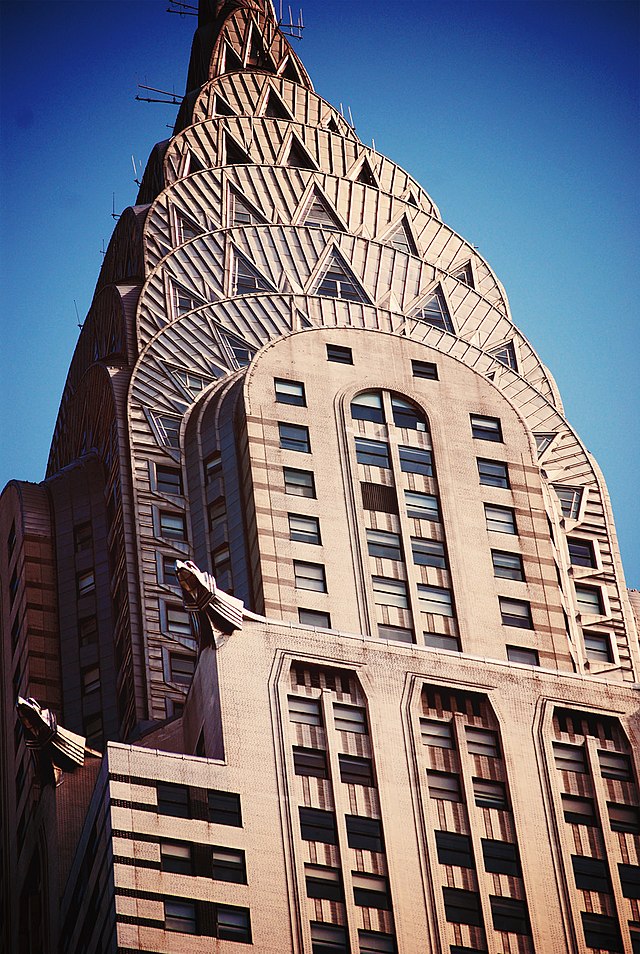
At the corner of 42nd Street and Lexington Avenue in Midtown Manhattan, the Chrysler Building is an imposing Art Deco skyscraper. It is the world’s tallest brick structure with a steel framework, standing at 1,046 feet (319 metres), and it held that title for 11 months following its completion in 1930. The Chrysler and The New York Times Building are tied for the 11th tallest structures in the city as of 2019. The building was made by Walter Chrysler, the head of the Chrysler Corporation, and was initially a project of real estate entrepreneur and former New York State Senator William H. Reynolds. The early skyscraper, the Chrysler Building, competed with the Empire State Building and 40 Wall Street for the title of highest structure in the world during its construction. The Chrysler Building was built and planned expressly for the automaker, but Walter Chrysler decided to cover the entire cost personally so his children might inherit it; the firm did not pay for its construction and never owned it. After an addition was finished in 1952, the Chrysler family sold the structure the following year. There were various subsequent owners of the structure. Reviews of the Chrysler Building’s architecture were ambivalent when it first stood, ranging from the thought that it was modernist and iconic to opinions that it was dull and unimaginative.
The building’s perceptions have gradually changed, and it is now regarded as a model of Art Deco architecture. In 2007, the American Institute of Architects placed it ninth on its list of America’s Favorite Architecture. In 1976, the structure was listed on the National Register of Historic Places as a National Historic Landmark, and it was given landmark status in New York City in 1978. It is situated besides Grand Central Terminal in Midtown Manhattan at 405 Lexington Ave. The 71st story of the building housed an observation deck known as “The Celestial” until 1945. The observation deck is no longer present, however if you need a dentist visit, you can actually travel as high as the 69th level. Only those seeing a dentist at one of the offices up there are permitted to use the elevators.

